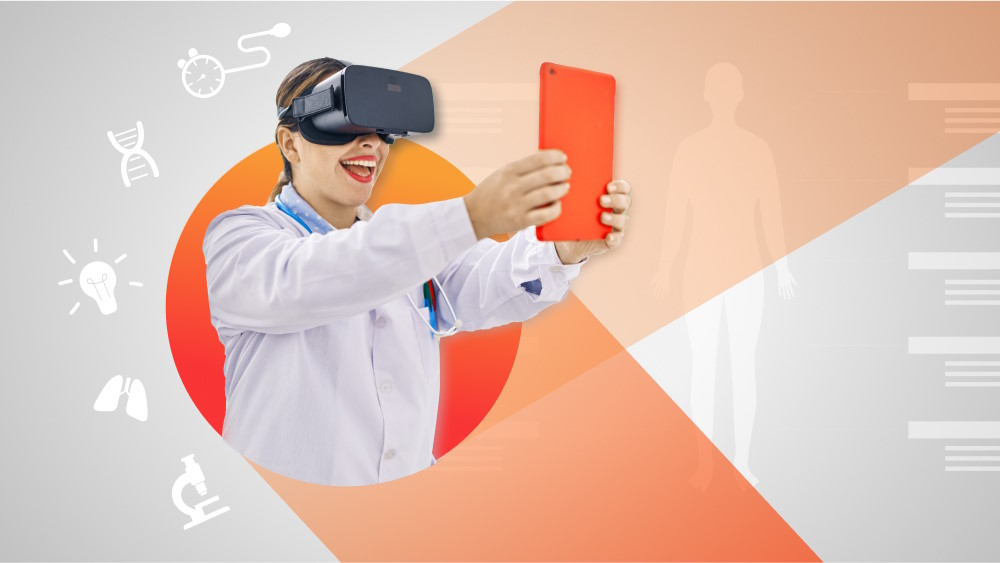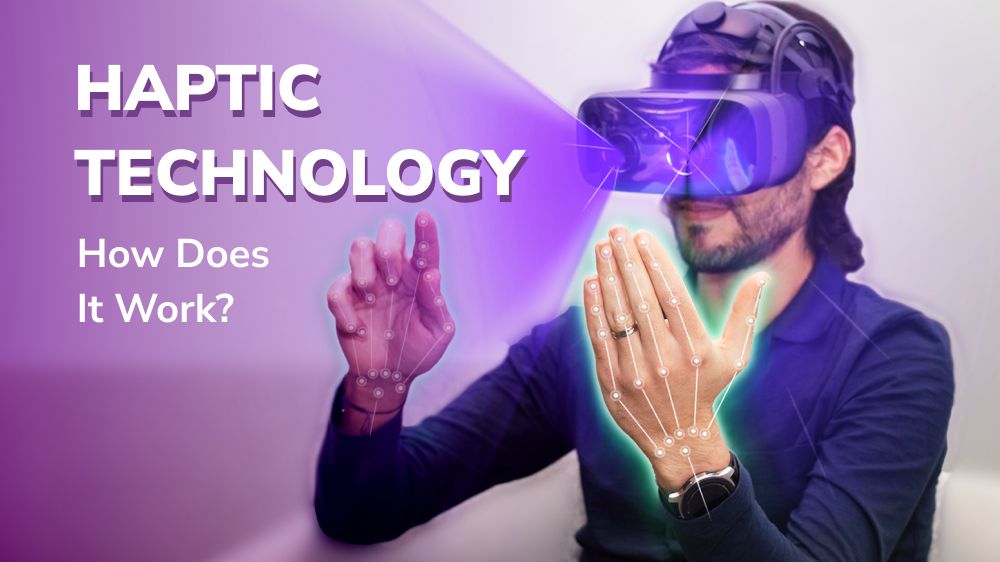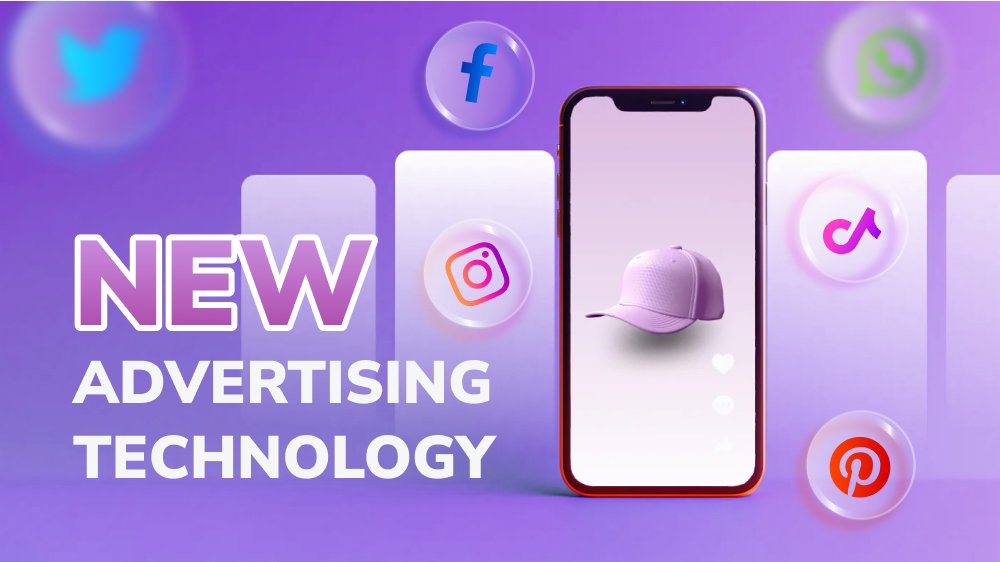Is AR Useful for Medical? The Benefits of Augmented Reality in Healthcare

Content Map
More chaptersVirtual reality (VR) and augmented reality (AR) have grown quickly to be an emerging technology with the potential of revolutionizing various industries, including healthcare. AR, as a technology, places a layer of information on top of the physical environment and assists the user to perceive and even manipulate the environment. This specific innovation is not entirely science fiction but a new wonder in making the impossible possible, which has begun to manifest itself in transforming many specialties in medicine and in the ways they approach people.
The demand for AR in the healthcare market was $1.6 billion in 2022, and the demand is expected to expand and touch $12.2 billion in 2031. This growth is due to the increasing usage of augmented reality in medicine as a tool for training doctors during operations and to inform patients. For example, AR was implemented to provide real-time statistics and 3D displays during operations, which enhance precision and results. Further, by using AR apps in medical training, medical students can touch, rotate, and manipulate 3D anatomical models to improve knowledge and memory consolidation.
With the increase in usage of digital platforms within the healthcare professionals, even augmented reality is being seen to be quite useful. The use of augmented reality is poised to become an indispensable tool in the practice of medicine soon. It is therefore right time to take a look at the various benefits of augmented reality in healthcare.
How Does Augmented Reality Function?

AR technology blends digital information with the physical world, thus improving human perception through the use of interactive content. The backbone of AR technology are sensors and cameras that gather information about the environment. These sensors enable AR systems to grasp things such as spatial orientation, component identification, and motion. From the data derived from the AR systems, some sort of logic can be deduced on how best to position objects in such a manner that it shall seem as real as possible to the user.
Tracking and Sensing Techniques
Two primary techniques are commonly used:
Marker-based tracking can be done by using visual markers, which are QR codes or known patterns that the AR app identifies with the help of a camera. Once a marker is detected by the camera, the AR system is also able to place content very accurately on top of the marker. This method is quite simple and appropriate for use in controlled settings such as expos, educational facilities, etc.
In contrast, markerless tracking relies on technologies such as GPS, accelerometers, and gyroscopes. This approach makes it possible for AR apps to work as usual, with no fixed markers so as to allow free movement within the augmented reality environment. As suggested by its name, markerless tracking is more appropriate for applications that involve spatial orientation, such as navigation or outdoor activities.
Display Methods
The type of display method also plays a significant role in determining the efficacy of an AR experience.
AR headsets like the Microsoft HoloLens or Magic Leap overlay information and graphics into the user’s visible world. These headsets feature integrated sensors and cameras that enable users to perform actions using gestures and provide a better view of the surroundings. Digital overlays can be seen by users while, at the same time, the users are conscious of the environment, making it more realistic. Of particular importance, headsets are fully helpful in industrial use, for example, in health care, clinical skill training, and simulations, where hands-busy information should be easily accessed.
Smartphones and tablets are among the most common devices for accessing AR applications. With their built-in cameras and sensors, these devices can run AR apps that overlay digital content onto the physical world through the screen. Popular examples include games like Pokémon GO and various educational apps that enhance learning through interactive features.
How Has AR Changed the Healthcare Industry?

Improved Medical Education and Training
One of the most significant improvements that AR given is the capacity to simulate real-world scenarios, allowing medical practitioners to participate in the interactive medical training without the inherent risk associated with traditional methods. Through AR, the students can practice surgical procedures and emergencies that are essential lessons in their training, giving them valuable experience before they ever step into an operating room.
AR is especially crucial in increasing awareness of the anatomy as well. By superimposing the digital images and models of human anatomy onto the physical environment, medical professionals can gain an actual view of the complex structures and systems in a 3D manner. This interactive approach allows students to explore the intricacies of the human body in detail, fostering a deeper comprehension of anatomical relationships and functions. As a result, AR helps to educate healthcare professionals and better prepare them to diagnose and treat patients effectively.
Further, AR gives the learner an experience of handling real-life equipment, which conventional learning techniques may not offer. For instance, there is an option for the medical simulators to mimic the appearance of a patient’s body and thus be useful in demonstrating palpation and auscultation, among other assessments. This type of training improves not only students’ theoretical background but also contributes to making future healthcare professionals more confident to meet actual patients.
Enhanced Surgical Procedures
Surgeons are able to use AR overlays in the operation, where they combine pertinent data—including a model of the patient’s internal structures or vital signs—directly onto their field of vision. This capability enhances the surgeon’s spatial awareness of the architectural support of the case and, thus, gives a clear picture of the patient’s anatomy characteristics during the operation.
There is consensus that accuracy and precision are among the most significant advantages that augmented reality confers onto surgical environments. Sharing exposure to detailed anatomical information and motion pictures assist the surgical team in attempting to reduce the chances of making errors, especially in complex surgeries. For instance, in surgical processes that require minor invasive maneuvers, AR can assist healthcare practitioners in maneuvering instruments inside the human body.
Moreover, AR contributes to reduced surgical time and complications. By providing surgeons with essential information at their fingertips, AR can streamline workflows and enhance coordination among surgical teams. This efficiency not only shortens the duration of surgeries but also minimizes the risks associated with prolonged procedures, ultimately improving patient safety.
Improved Patient Care and Outcomes
AR enables healthcare practitioners to view the patient data, such as medical imaging, and genomic data in real physical space. This means that doctors can develop better approaches to treating people and guarantee that the prescribed treatment will correspond to the patients’ traits.
AR also supports remote consultations and monitoring, which are very frequent in today’s health practice. With the help of AR applications, the patient has an opportunity to talk to the caregivers without getting to the clinic or the hospital. This capability will be helpful to individuals in remote or underserved areas who may have limited access to specialists.
Besides, AR plays an important role in improving patient experience and providing patient education. With AR tools, the caregivers are able to illustrate different ailments, the available therapies, and the procedures that are followed after surgery in the easiest ways possible. Not only patient understanding is enhanced by this utilization of information, but also patients are encouraged to be active participants during their healthcare process.
Increased Efficiency and Cost-Effectiveness
Apart from enhancing the quality of care for patients, augmented reality has benefits such as increasing efficiency and economic value in the healthcare industry. The first advantage is the practical convenience of improving the work processes of medical facilities within the organization. AR tools may help in managing tasks in healthcare teams in order to keep all the team members aware of the patient’s needs and the treatment plan. This is real-time communication reduces time barriers and fosters teamwork; healthcare professionals therefore can deliver care more effectively.
Moreover, AR technologies find the extent of application in minimizing error and waste in different processes. For instance, by using AR during surgeries, medical specialists can immediately receive the necessary visual information on further actions to prevent severe errors. This focus on precision leads to more successful outcomes and minimizes the financial burden on both healthcare providers and patients.
Improved resource allocation is another significant advantage of AR in healthcare. For example, hospital administrators can use AR analytics to identify patterns in patient flow, allowing them to allocate staff and equipment more effectively. This optimization ensures that resources are used efficiently, reducing waste and improving the overall sustainability of healthcare operations.
Practical Use Cases of AR in Healthcare

Here are some real-world examples of how AR is being utilized in healthcare organizations:
Surgical Assistance: Case Study of the HoloLens in Surgery
Microsoft HoloLens is probably one of the best examples of augmented reality (AR) being applied in surgery. HoloLens was applied to a complex neurosurgery conducted by a team at the Royal London Hospital. Surgeons used AR to display a 3D map of the brain of a particular patient, superimposed onto their anatomical structures. This approach enabled the surgical team to move around in the tissues in ways that would otherwise be difficult, with less damage to the other healthy tissues.
The visualization of the crucial information in the operation theater helps the surgeons to improve precision and confidence during the operation. This method has been proven to shorten the time of surgery and enhance the patient’s condition, which makes AR an example of how existing methods of surgery can be optimized and turned into more effective and less invasive actions.
Medical Training: Case Study of the University of Illinois College of Medicine
AR is creating a splash in medical education, which has been epitomized by the University of Illinois College of Medicine. The institution adopted an AR application commonly referred to as Augmented Reality for Anatomy in order to assist medical students in learning. By the application of the AR glasses, the students are able to picture the 3D anatomical models on the cadavers while in dissection classes.
It gives the learners a practical touch that cannot be achieved when students are just being taught from books and blackboards. Students have responded that this realistic learning environment enhances knowledge retention and self-assurance when working with actual patients.
Patient Education: Case Study of AccuVein
AccuVein is a pioneering device designed to improve patient education and care during venipuncture through the use of AR’s outstanding feature. This device can display real-time imaging of veins embedded on the surface of a patient’s skin, hence enabling healthcare workers to gain easy access to veins before adopting blood sampling or the administration of IVs.
According to the cross-sectional study carried out in a pediatric hospital, the nurses said they found it easier to avoid many attempts, especially while putting an IV in the veins of young patients because their veins are usually small. Not only the accuracy of the procedure was apparent, but also the patient’s psychology was much more relaxed when the child saw on the screen where the needle would be inserted, and this increased understanding as well as comfort for the child.
Conclusion
The above examples give the prospects of augmented reality in healthcare a true depiction. As we look to the future, there will be even more exciting uses of the technology since fundamental research is progressing at an impressive pace.
If you are interested in implementing AR in your healthcare practice, our team at Orient Software is here to assist you. Our experts will assist you in making the right decisions to use AR as a means to improve your field and be on the cutting edge of knowledge in the sphere of medicine. Simplify your attempt at utilizing AR technology for your business by reaching out to Orient Software to help you unlock its full potential.







